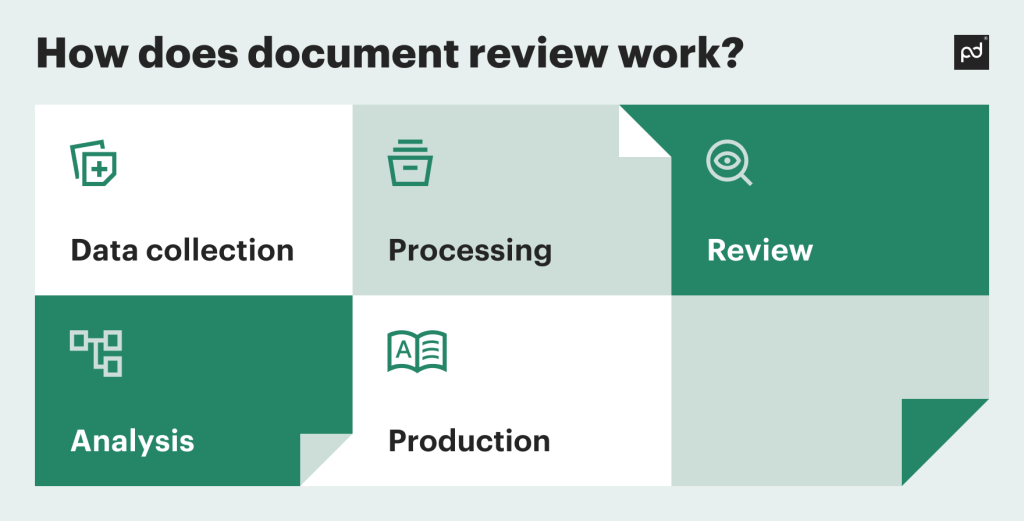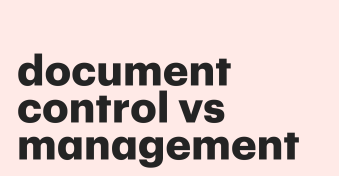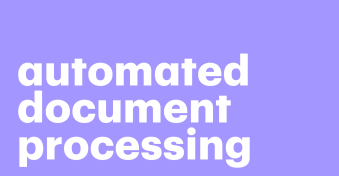Document review has a rich history, tracing its roots back to the inception of the first documents, lawyers, and legal proceedings.
The methods used in this process have undergone substantial transformations throughout history.
Despite its journey, traditional document review faces numerous challenges in today’s fast-paced world. Going through a myriad of documents manually to find the right doc can take hours.
Deciding on what’s important may vary between reviewers.
The question is — how do you improve this process?
In this article, we’ll uncover the mechanics of document review and highlight the advancements brought by eDiscovery.
We’ll also explain how document generation, document control, and automation software can help you enhance efficiency and precision during this process.
Key takeaways
- Document review stands as a guardian of legal compliance, ensuring that information aligns seamlessly with legal requirements to avoid complications in court proceedings.
- Challenges in manual document review, such as time delays, potential oversights, subjective interpretations, increased costs, and limited scalability, demand a shift towards more efficient practices.
- The financial burden of hiring human reviewers and the struggle to manage expanding data volumes further complicates the landscape.
- Embracing modern document review methods with dedicated software tools provides a streamlined and efficient approach, accelerating legal workflows.
What is document review, really?
Document review is a detailed examination of legal documents to assess their relevance, privilege, or confidentiality — everything from emails and contracts to memos and other forms of communication.
Lawyers and paralegals use it as a foundation for in-depth evidence analysis, ensuring thorough consideration of all key information when preparing and executing a legal case.
What is eDiscovery?
eDiscovery or electronic discovery is a systematic process of identifying, collecting, analyzing, and producing electronically stored information (ESI) for legal investigations and proceedings.
These electronic assets typically include emails, databases, audio, video, digital contracts, and other electronically transmitted data sources.
How does document review work?
Navigating the landscape of document review requires a systematic approach and demands seamless collaboration among legal professionals, paralegals, and document review attorneys.
Let’s break down the key steps.

Data collection
The data collection phase involves identifying and gathering all potentially relevant documents.
This may include electronic files, emails, paper documents, and other sources of information.
The goal is to compile a comprehensive dataset for in-depth scrutiny.
Document automation tools can search large datasets, defining relevant documents based on keywords, metadata, or contextual analysis.
Processing
During processing, collected data undergoes several transformations.
This includes indexing to create a searchable database, deduplication to eliminate redundant documents, and file format conversion for accessibility.
The processed data is then ready for law firms to review.
Review
In the review phase, legal professionals and document review specialists assess the collected documents.
They apply criteria to determine each item’s relevance, privilege, or confidentiality.
These predefined criteria may include factors like the date of the document, its author, its subject matter, and any other relevant details specified by a legal team.
Robust document management platforms often integrate technology-assisted review (TAR) using machine learning algorithms.
TAR helps prioritize documents based on relevance, significantly reducing the manual review workload.
Analysis
The focus shifts to understanding the context and connections between different pieces of information. Legal professionals analyze patterns, relationships, and the overall narrative presented by the documents.
This depth of analysis strengthens the legal team’s grasp of the case.
Advanced document tracking tools can assist legal professionals in identifying patterns, trends, and anomalies within the data.
Production
Once the review and analysis are complete, the selected documents move into the production phase.
Relevant materials are organized and presented in a format suitable for legal proceedings.
This can include preparing evidence for court, responding to discovery requests, or sharing information with opposing parties.
How can PandaDoc help make the document review process more efficient?
PandaDoc offers a suite of robust tools designed to streamline and optimize the document review workflow.
Let’s look at these tools and what they offer you and your team.
Centralized document repository
PandaDoc’s document management software offers a centralized repository with search functions for all legal documents, facilitating easy access and fast retrieval.
Version control and collaboration
The platform provides version control features, allowing legal professionals to track changes and maintain an organized record of contract revisions.
Legal teams can collaborate seamlessly within the platform, enhancing communication and ensuring all stakeholders can access the latest document versions.
Security and compliance
The software includes robust security measures to safeguard sensitive legal information, ensuring compliance with data protection regulations.
All PandaDoc tools are E-SIGN, UETA, and HIPAA compliant.
The contract management software guarantees consistency in document formatting and content, reducing the risk of errors and ensuring compliance with legal standards.
Real-time monitoring
Comprehensive tracking software enables real-time monitoring of document interactions, providing insights into when recipients open, review, and engage with legal documents.
E-signature integration
Integration with our e-signature solution expedites the signature process, reducing turnaround time and accelerating the finalization of legal agreements.
Audit trails
Document tracking software generates comprehensive audit trails, offering a detailed history of document activities for transparency and accountability.
Workflow optimization
PandaDoc’s contract management tool accelerates the document creation process, ensuring that templates are easily customizable and adaptable to specific case requirements.
Utilizing modern tools for document review is a step toward efficiency, where precision meets simplicity.
Take charge of your document review processes with PandaDoc — start a trial or schedule a demo today!
Disclaimer
PandaDoc is not a law firm, or a substitute for an attorney or law firm. This page is not intended to and does not provide legal advice. Should you have legal questions on the validity of e-signatures or digital signatures and the enforceability thereof, please consult with an attorney or law firm. Use of PandaDoc services are governed by our Terms of Use and Privacy Policy.

